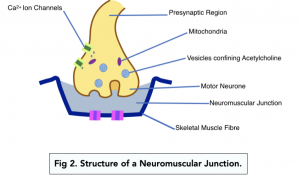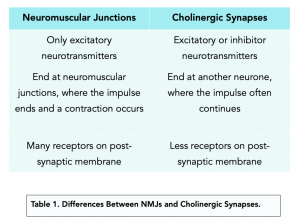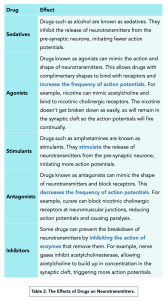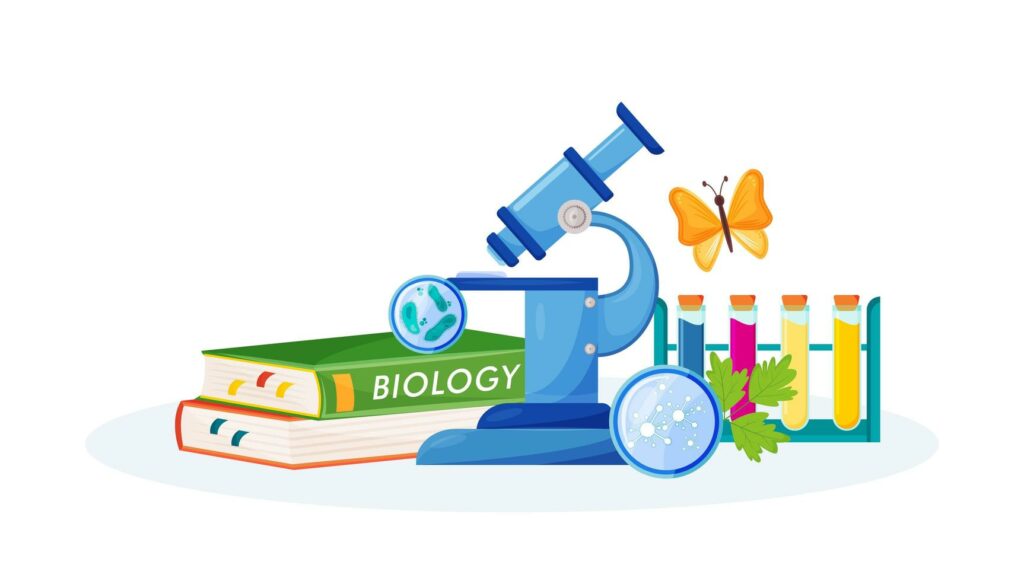The Neuromuscular Junction (A-level Biology)
The Neuromuscular Junction
Structure of a Neuromuscular Junction
Neuromuscular Junctions
- Synapses can be anywhere – e.g. between two neurones, between a neurone and a muscle.
- A neuromuscular junction occurs between a motor neurone and an effector muscle cell.
- Neuromuscular junctions use acetylcholine (a type of neurotransmitter), which binds to nicotinic cholinergic receptors on the muscle cells.

Neuromuscular vs. Cholinergic Synapses
Transmission Across Neuromuscular Junctions
We have already learnt about the steps in transmission across a cholinergic synapse.
The process is very similar at neuromuscular junctions, but instead of between two neurones, the synapse occurs between a motor neurone and a muscle cell:
- Action potential reaches the synaptic knob.
- Voltage-gated calcium channels open and calcium ions rush into the pre-synaptic neurone.
- Synaptic vesicles fuse with the pre-synaptic membrane.
- Acetylcholine is released and diffuses across the synaptic cleft.
- Acetylcholine binds with nicotinic cholinergic receptors on the muscle cell membrane.
- Sodium-ion channels open which causes depolarisation, leading to muscle contraction.
The muscle cell membrane contains clefts, which are folds of the membrane containing acetylcholinesterase, the enzyme that breaks down acetylcholine.
Differences between NMJs and Cholinergic Synapses

Effects of Drugs on Neurotransmitters
You don’t need to know any names of specific drugs, but you do need to be able to recognise and explain why a drug might be having a particular effect on a synapse.

The Neuromuscular Junction (NMJ) is the site where nerve impulses are transmitted from motor neurons to muscle fibers, resulting in muscle contraction. It’s the crucial link between the nervous system and the muscular system.
When an action potential reaches the axon terminal of a motor neuron, it triggers the release of the neurotransmitter, acetylcholine. The acetylcholine molecules bind to receptors on the muscle fibers, causing a depolarization of the muscle membrane and leading to muscle contraction.
The NMJ plays a key role in allowing us to control our movements and carry out voluntary actions. Without the NMJ, nerve impulses would not be able to stimulate muscle contraction, leading to paralysis.
If the NMJ is not functioning properly, it can lead to a variety of disorders, such as myasthenia gravis, a condition that causes muscle weakness and fatigue, and botulism, a type of food poisoning that causes muscle paralysis.
Botulism is caused by a toxin produced by the bacterium Clostridium botulinum. This toxin interferes with the normal function of the NMJ by preventing the release of acetylcholine, resulting in muscle paralysis.
Acetylcholine is the neurotransmitter responsible for transmitting the nerve impulse from the motor neuron to the muscle fiber. It’s released from the axon terminal of the motor neuron and binds to receptors on the muscle fiber, causing a depolarization of the muscle membrane and leading to muscle contraction.
Yes, certain drugs can affect the NMJ by altering the levels or activity of acetylcholine. For example, some drugs used to treat myasthenia gravis increase the levels of acetylcholine at the NMJ, while others interfere with the breakdown of acetylcholine to enhance its effects.
Aging can lead to a decline in the function of the NMJ. This can result in decreased muscle strength and increased muscle fatigue, as well as a decline in fine motor control and coordination. However, regular physical activity and a healthy diet can help to maintain the function of the NMJ and slow down the effects of aging.






Still got a question? Leave a comment
Leave a comment